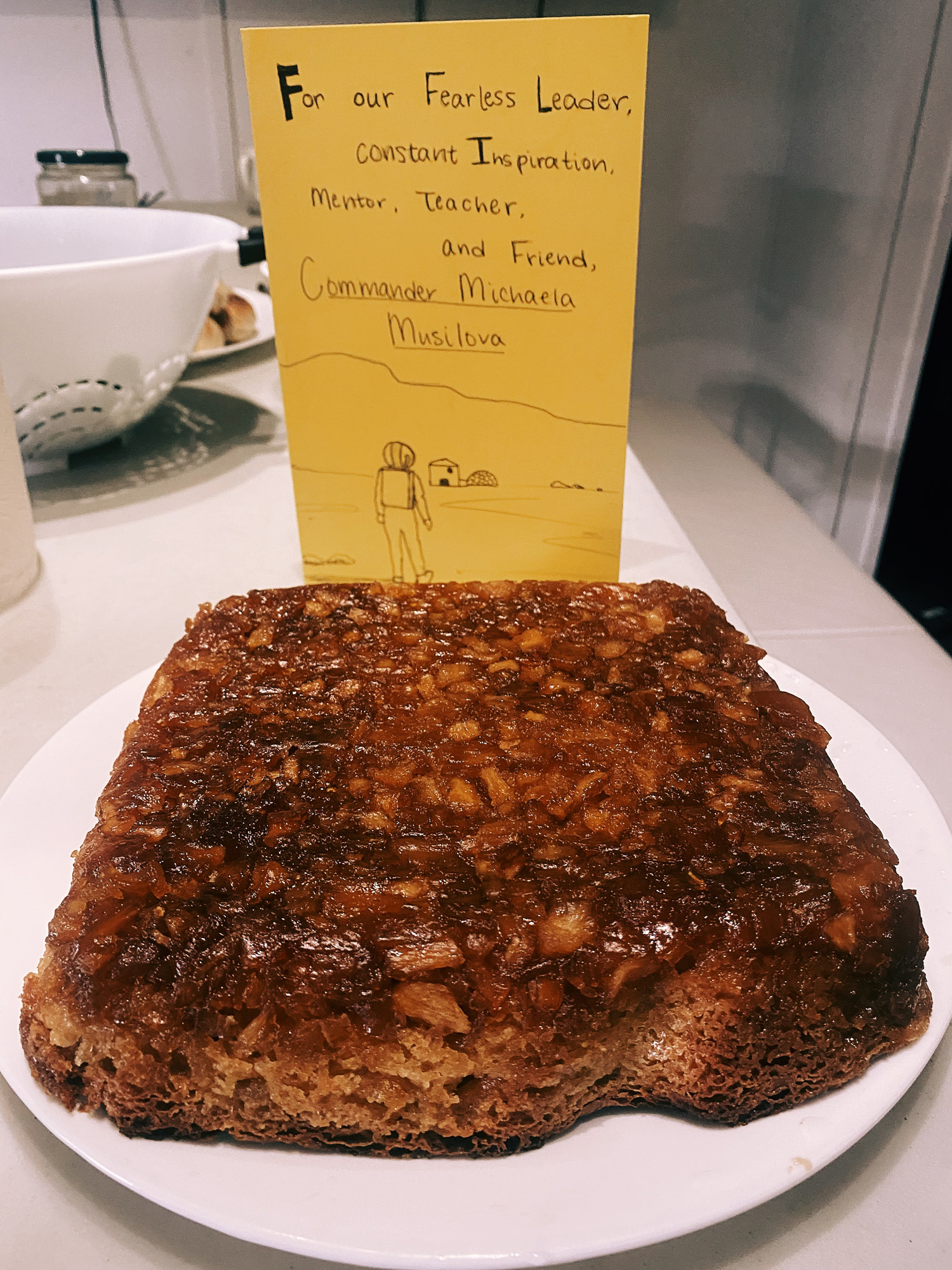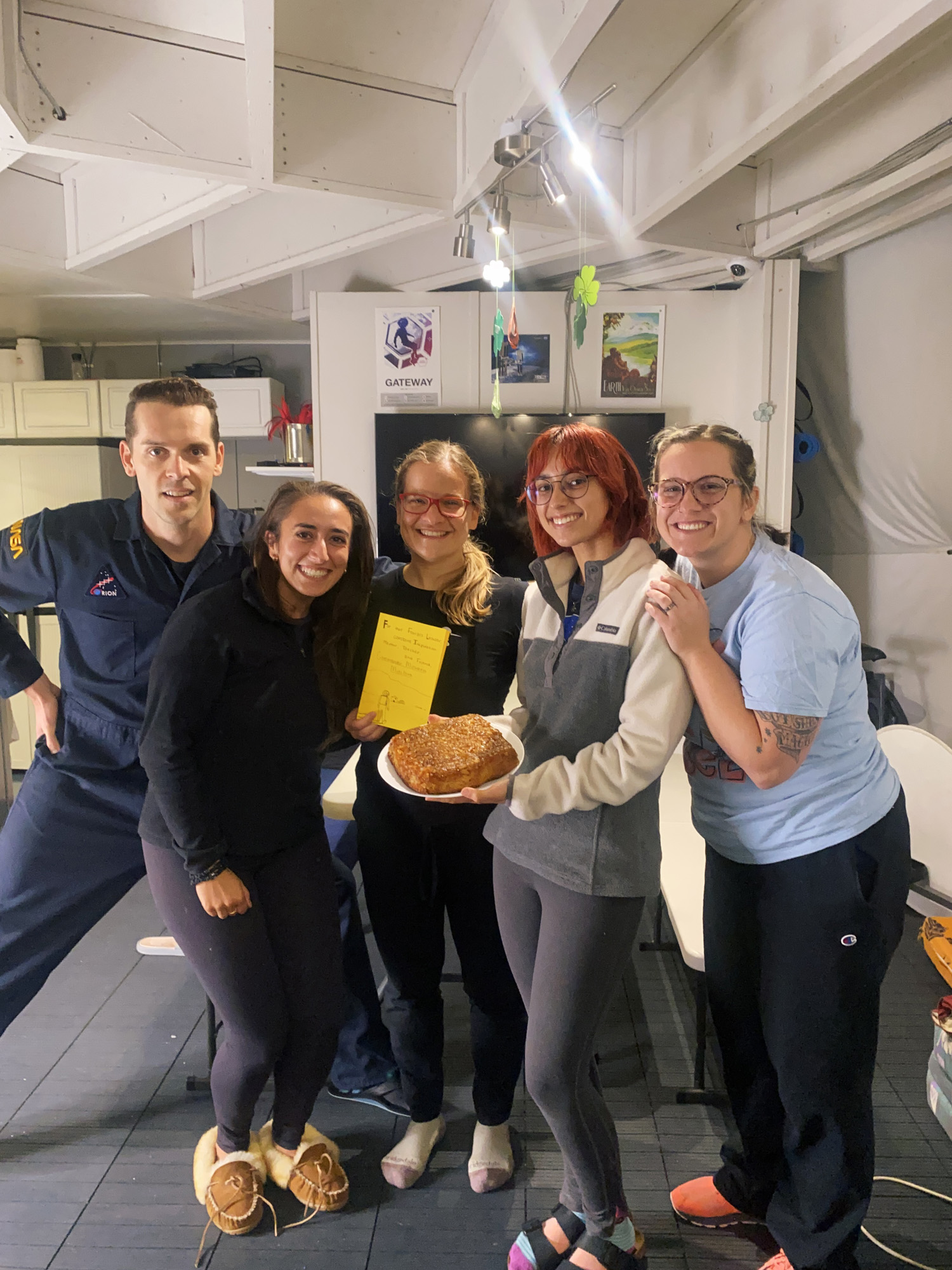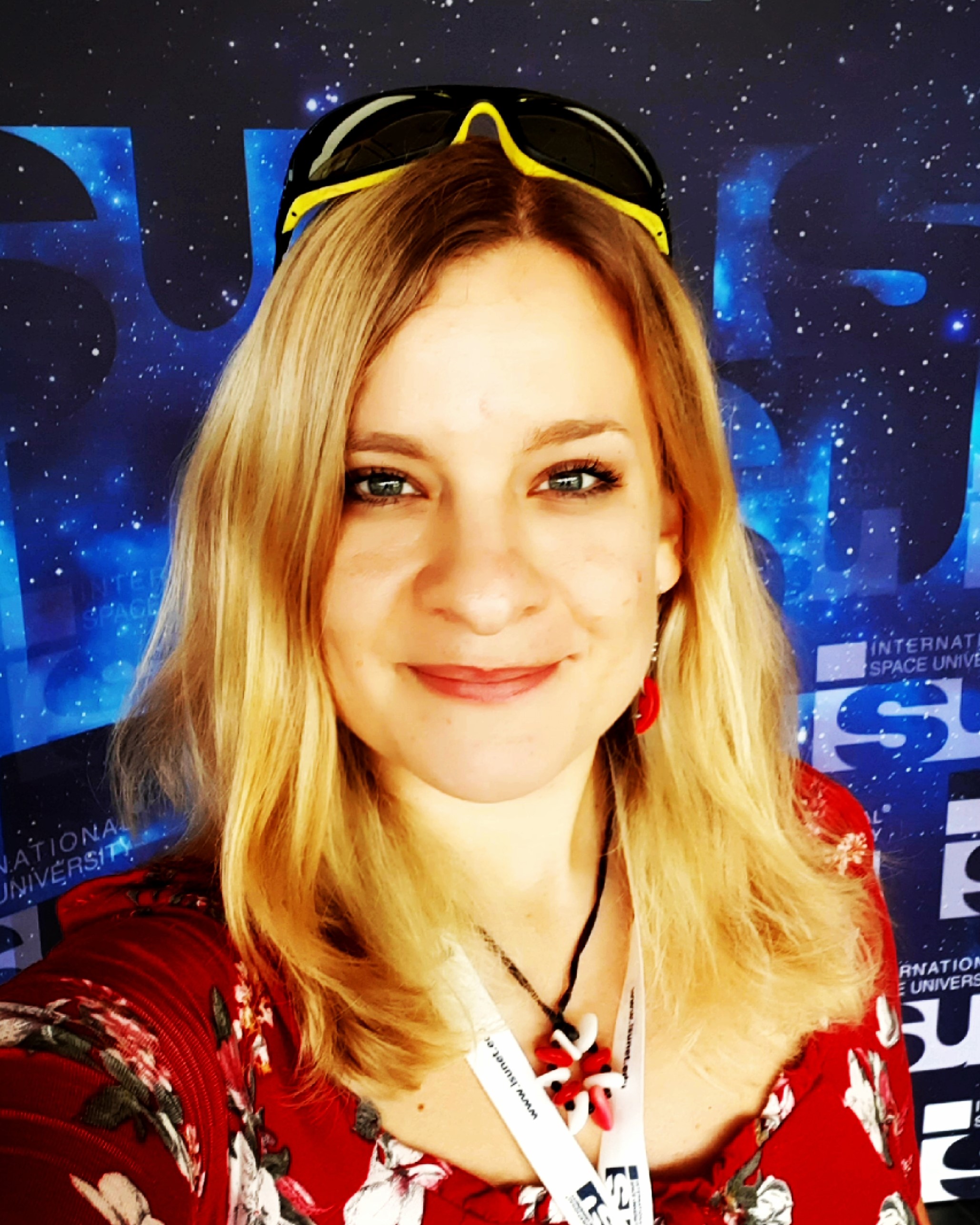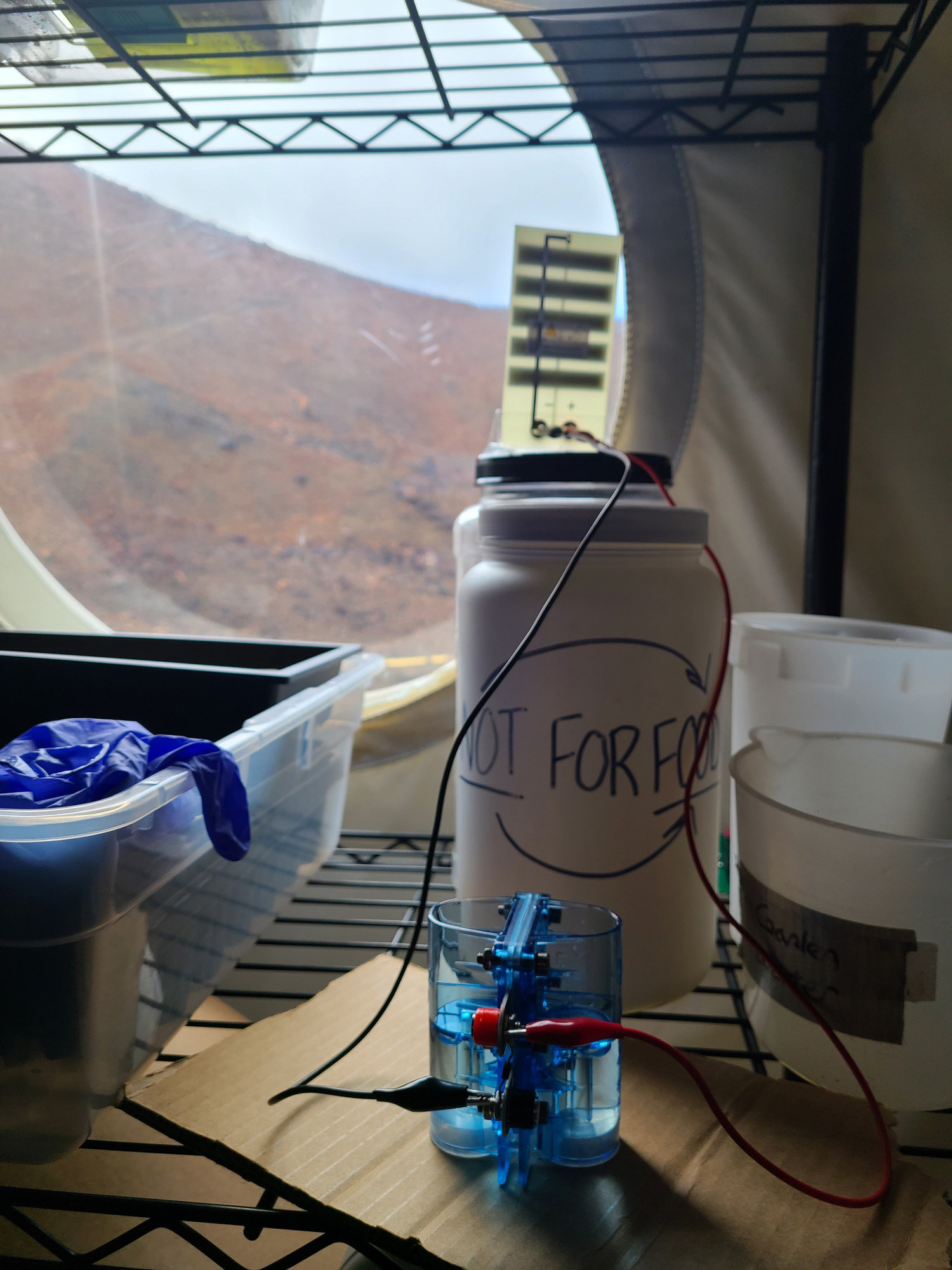A sweet surprise and a bittersweet farewell — Commander's report: sol 14
The Valoria 3 crew honors their commander with a surprise goodbye party.
Commander's report for the Valoria 3 Martian mission at HI-SEAS
Sol 14 (Aug. 26, 2021)
Surprise! Out of nowhere, a pineapple upside-down cake was placed on the living room table, together with a beautiful handmade card for me. The Valoria 3 crew baked me a surprise cake of gratitude, using our freeze-dried ingredients and the small toaster oven we have at our disposal. I was even more amazed that they kept it a secret, since there's barely any privacy in this small habitat.
I was moved to tears. I'm incredibly grateful for such a lovely gesture and the heartfelt words my crewmembers very kindly wrote to me in the thank-you card. It has been an honor to be the commander of this great crew, and I feel very privileged to call these amazing humans my friends. I always hope to encourage the crew to become much more than a group of space professionals trying to survive together under extreme conditions during our analog missions. My goal is always for us to become a space family, and indeed that's what the Valoria 3 crew has become.☺

Time flew by during this mission. I can't believe we'll be returning to Earth tomorrow. It will certainly be bittersweet, as I will miss my crew wholeheartedly. We had an extraordinary time together, and I feel very lucky to have worked with such talented people. During our free time, we shared personal life stories, got to know each other well and learned so much from one another.
We also laughed a lot; sometimes, it felt like hysterical laughter, but I just called it "Martian sickness." Every crew seems to reach a point during the mission where all formalities are thrown out the window (or the airlock, in our case) and just embrace their individual fun sides. There were some days when bursts of laughter would occur several times an hour, even during our Marswalks.

One night, we were fortunate that the weather cleared enough for the crew to go on a nighttime Marswalk, when we could gaze at the stars and enjoy their beauty. My crewmembers also thought of our home, Earth, that we left behind and other worlds out there. Even then, I could see through our communication devices that the infectious laughter continued to spread among my crewmembers. I stayed inside to be the so-called HabCom, the main communicator from within the habitat. Though I was separated from them, I was still chuckling away at the hilarious messages they were sending me and the silly poses they were making outside in their spacesuits. What a gift it has been to have such a crew.
Breaking space news, the latest updates on rocket launches, skywatching events and more!
Sadly, today was also about wrapping up the mission and everyone's research. My crewmembers learned everything I taught them very quickly, which made my work as the commander very easy; we could focus on accomplishing our research goals, and everyone has done an excellent job of progressing with their projects. Engineering Officer Britaney Phillips is excited to share this experience with her students. On a daily basis, Britaney found Martian examples of the standards they cover in her high school engineering class, and she looks forward to using this opportunity to inspire future engineers.
Science Communication Officer Sarafina El-Badry Nance loved her time on Mars. She analyzed dozens of geological samples, which she will correlate with data on supernovae. Her goal is to learn more about the formation of the solar system and potentially determine which supernova might be responsible for its formation. She also looks forward to including her time on simulated Mars in her forthcoming memoir, "Starstruck."
Another successful experiment includes Bioengineering Officer Nils Averesch's project, through which he demonstrated the microbial production of bioplastics in bioreactors. During the mission, Nils used sugar as the substrate, which is the same microbial cell factory that also accepts carbon dioxide as feedstock. This may one day allow astronauts to produce materials for consumables and durable goods from the Martian atmosphere, serving the concept of in situ resource utilization.

Crew Operations Officer Elisha Jhoti will continue her research post-mission. She will analyze the ground penetrating radar data she collected during the mission using processing software and their geological context from the GoPro videos she made. Elisha will also compare the results with data from the ground penetrating radar instrument RIMFAX onboard the Perseverance Mars rover to see if any of the environments encountered during the mission are similar to that of Mars.
In my case, I was happy to collect all of the samples I wanted for my different research collaborations. They include astrobiology projects with NASA's Goddard Space Flight Center and Honeybee Robotics, planetary protection studies with the University of Westminster and outreach projects with schools around the world. I plan to perform many more projects like these during future analog missions. Next up, we'll have a series of human-research-based missions taking place at HI-SEAS until the end of spring 2022. I can't wait for the new crews and exciting projects that will be part of HI-SEAS missions after that.
Commander Musilova signing off to take a much-needed break back on Earth with all my different families around the world. I will miss you a lot, Valoria 3 and Mars! Until next time.
Follow Michaela Musilova on Twitter @astro_Michaela. Follow us on Twitter @Spacedotcom and on Facebook.

Dr. Michaela Musilova is an astrobiologist with a focus on life in extreme environments. She has a PhD degree from the University of Bristol and is a graduate from the International Space University's (ISU) Space Studies Program. Michaela's space research experience includes working at the NASA Jet Propulsion Laboratory, University of London Observatory, Canada-France-Hawaii Telescope, on NASA's and the U.K. Space Agency's MoonLite project, being an analogue astronaut and Commander of numerous simulated missions to the moon and Mars at the HI-SEAS station in Hawaii, and at the Mars Desert Research Station in Utah. Michaela is currently the Director of HI-SEAS, as part of the International MoonBase Alliance. She is also a visiting Professor at the Slovak University of Technology, Vice-Chair of the Slovak Organisation for Space Activities, Adjunct Faculty at ISU and the Senior Research Adviser for Mission Control Space Services Inc.
She has received numerous prizes and grants, including the Emerging Space Leaders Grant from the International Astronautical Federation (2016) and the Women in Aerospace – Europe Young Professional Award (2016), and she was selected as one of the most promising 30 under 30 by Forbes Slovakia (2015). Michaela is also actively involved in the Duke of Edinburgh's International Award, as a patron of the program in Slovakia and an Emerging Leader Representative for Europe, Mediterranean and Arab states. Furthermore, she enjoys participating in STEAM outreach activities from teaching at schools, giving public presentations, to working with the media and more, as well as encouraging people to pursue their dreams. For instance, she is an Advisory Board Member of the STEM Punks immersive programs for students and teachers.


